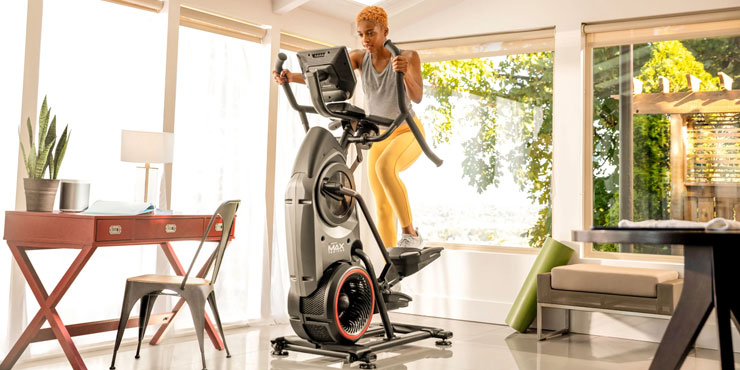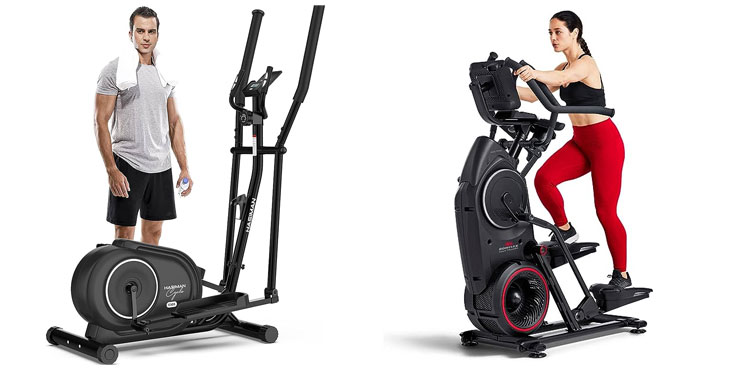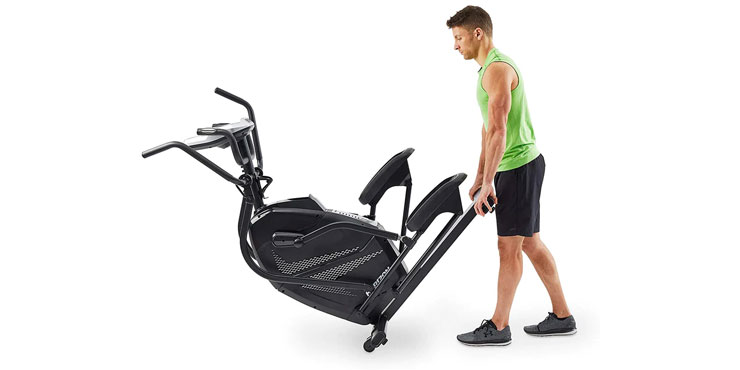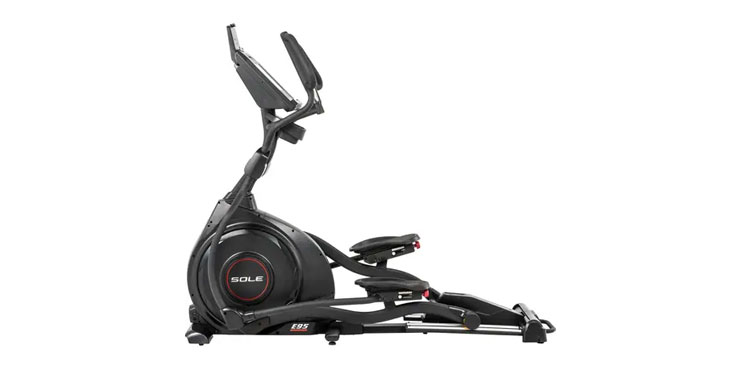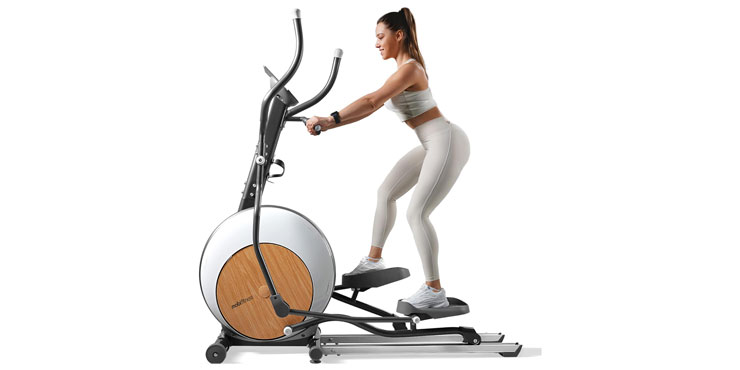How Much Does an Elliptical Weigh?
If you’re in the market for a new piece of exercise equipment, you’ve likely asked yourself, “How much does an elliptical weigh?” Understanding the weight of this machine is an essential step in your purchasing decision. These machines are favored for their low-impact, full-body workouts, making them suitable for fitness enthusiasts of all levels—from beginners to seasoned athletes. But their weight can vary dramatically depending on size, features, and construction materials. This is one of the best cardio machines for home gym, they are quite compact. But it is not always easy to have free space for such equipment. Therefore, they have to be moved around.
Knowing the weight is not just a trivial matter; it can impact floor support, ease of maneuverability, and even shipping costs. In this post, we’ll break down the various factors that contribute to an elliptical’s weight, helping you make an informed decision that goes beyond just your fitness needs. So, let’s dive into the specifics of what you need to consider when answering the question: How much does an elliptical weigh?
Contents
- Type of elliptical
- Construction Type
- Features
- Weight Variability
- What is the average size of an elliptical?
- Why size matters:
- What Factors Affect Elliptical Machine Weight?
- Material
- Construction Type
- Functionality
- Additional Features
- Mobility Features
- Popular elliptical models comparison
- Why Elliptical Trainers Have Weight Limits?
- Tips to move your elliptical easily
- How Much Does an Elliptical Weigh FAQ:
Type of elliptical
Ellipticals come in a variety of designs, features, and weight ranges to suit different fitness levels, workout preferences, and space constraints. Here’s a breakdown of the major categories:
Construction Type
- Standard: These are the most common and offer both upper and lower body workouts. They tend to be mid-range in size and weight.
- Compact or folding: Designed for smaller spaces, these elliptical machines are generally lighter and may have fewer features.
- Commercial: Built for gyms, these are typically the largest and heaviest, with more durable materials and additional features such as advanced programming and cooling systems.
- Center-drive: These have a more compact design, but maintain the same stride length as standard ellipticals, offering a balance of size and performance.
The minimum weight will be under desk ellipticals that allow you to perform basic exercises. For training the upper body, rubber band are supposed to be used. The most functional equipment with more resistance adjustments, the ability to use automatic programs and track results will weigh considerably more.
Features
- Basic: Offers simple, manually adjustable resistance and a limited number of preset workouts.
- Advanced: Offers numerous features such as touch-screen displays, heart rate monitors, customizable workout programs and Bluetooth connectivity.
- Hybrid: These machines combine the functionality of an exercise bike and an elliptical, offering more workout variety, but are often heavier and larger as a result.
- Variable stride: These elliptical machines allow you to adjust the stride length, simulating a walk, jog or run. This feature adds versatility, but often adds weight and size.
Weight Variability
- Compact: Generally weigh between 25-100 pounds, making them relatively easy to move.
- Standard Home: These typically weigh between 100-200 pounds.
- Commercial: Can weigh up to 400-500 pounds due to their heavy-duty construction.
- Center-Drive and Hybrid: These can vary greatly in weight, but generally fall within the range of standard home ellipticals.
Understanding the type, features, and weight range of different elliptical machines can help you make a more informed decision when purchasing an elliptical. Consider your space, fitness goals, and comfort level when researching your options.
What is the average size of an elliptical?
The average size of an elliptical machine can vary significantly depending on its type, construction, and intended use (home vs. commercial). However, a standard home elliptical often falls within the following dimensions:
- Compact: These are designed for smaller spaces and can be as small as 4 feet long, 2 feet wide, and 5 feet tall. The compact size is an advantage for apartments or smaller workout rooms, but may offer fewer features and a shorter stride length.
- Standard home: These typically measure about 6 to 7 feet in length, 2.5 to 3 feet in width and 5 to 6 feet in height. They offer a good balance of features and are sized to fit comfortably in most homes.
- Commercial gym: These machines are built for health club environments and can take up significantly more space – up to 8 feet in length, 3 feet in width and 6 feet in height. They are built for heavy-duty use, and their size often accommodates additional features such as advanced touch-screen displays and cooling fans.
- Center-drive: These are more compact, closer to 5 feet in length, but maintain a similar width and height to standard ellipticals. Their size allows for easier placement in your home while providing a comparable workout experience.
Why size matters:
The size of the elliptical must fit into the space you have allotted for it, and you should also allow extra space around the machine for easy access and safety.
Elliptical dimensions often correlate with stride length, which should be comfortable for the user. For example, smaller, compact machines often have a shorter stride length, which may not be comfortable for taller users.
Larger ellipticals often come with more features, such as advanced programming, built-in speakers, or cooling fans, which take up more space but provide a better workout experience.
Larger ellipticals tend to be more stable and durable, but you need to make sure your floor can handle the weight, which is especially important with commercial ellipticals.
In summary, there’s no one-size-fits-all answer, but understanding the general dimensions can help you choose an elliptical that fits your space, needs and workout goals.
What Factors Affect Elliptical Machine Weight?
The weight of an elliptical machine is influenced by several factors that can be crucial when selecting the right equipment for your home or gym. Here are some key considerations:
Material
Frame Material: Steel-framed ellipticals are generally more durable but heavier. Aluminum frames are lighter but may not offer the same level of sturdiness.
Flywheel: The weight and material of the flywheel can contribute significantly to the overall weight of the machine. Heavier flywheels often offer a smoother ride but add to the overall weight.
Construction Type
Compact or Folding: Designed for space-saving, these models are often lighter, using lighter materials and offering fewer features.
Standard: Generally weigh more because of a balance between durability and added features.
Commercial: These are the heaviest, made with heavy-duty materials and additional features designed for high-traffic use in public gyms.
Functionality
Basic vs. Advanced Models: Ellipticals with touch screens, speakers, and other advanced features will generally weigh more due to the additional components.
Hybrid Models: These machines that serve dual purposes, like an elliptical and an exercise bike, usually weigh more because of the additional mechanisms and features.
Adjustable Features: Machines with adjustable stride lengths, multi-position handlebars, or customizable pedal angles usually have added mechanical components, increasing the weight.
Additional Features
Built-in Accessories: Features like water bottle holders, tablet mounts, or cooling fans may slightly increase the weight of the machine.
Resistance Systems: Ellipticals with magnetic resistance systems tend to weigh more than those with air or manual resistance because of the additional weight of the magnets.
Mobility Features
Wheels and Transport Options: Some ellipticals come with built-in wheels for easier movement. While this feature doesn’t add much to the weight, the frame’s reinforced design to accommodate these could add some pounds.
Understanding these factors can help you make an informed choice, allowing you to find a machine that fits your space and exercise needs while also being manageable to move and install. Whether you’re planning to place your elliptical on an upper floor, are limited by space, or are simply considering shipping costs, the weight is an important factor to keep in mind.
Popular elliptical models comparison
| Model | Product Dimensions: | Max User Weight | Item Weight |
|---|---|---|---|
| Sunny Health & Fitness SF-E902 | 19″D x 25″W x 57″H | 220 lb | 35 Pounds |
| Stamina Inmotion E1000 Seated Elliptical | 24.5″L x 17″W x 12″H | 250 lbs | 24 Pounds |
| NordicTrack Commercial Smart Elliptical | 67″D x 29″W x 69″H | 350 lbs | 210 Pounds |
| Horizon 7.0 AE | 76″ x 24″ x 65.5″ | 325 lbs | 194 Pounds |
| SOLE Fitness E25 | 66.14″ x 33.86″ x 22.83″ | 350 lbs | 212 Pounds |
| Sole E98 Elliptical | 82″ x 67″ x 31″ | 400 lbs | 249 Pounds |
| Bowflex Max Trainer Series | 49″D x 26″W x 64.6″H | 300 lbs | 140 Pounds |
| Niceday | 48″D x 25″W x 62″H | 400 lbs | 106 Pounds |
| Fitness Reality E5500XL | 57.5″D x 24″W x 66″H | 270 lbs | 93 Pounds |
| Sole E95 Elliptical | 83″ х 34″ х 70″ | 400 lbs | 242 Pounds |
Why Elliptical Trainers Have Weight Limits?
Elliptical trainers have weight limits primarily for safety, structural integrity, and performance reasons. Here’s why there are weight limits:
Structural Integrity: Elliptical trainers are designed with specific weight capacities in mind. The materials, components, and construction of the machine are designed to support a certain amount of weight. Exceeding the weight limit can cause structural damage, wear and tear, and even mechanical failure, compromising the machine’s stability and safety.
Safety: Safety is paramount when using exercise equipment. Exceeding the weight limit can result in unstable movement, wobbling, and possible tipping. This poses a risk to the user, especially during intense workouts or at high speeds. The equipment may not be able to handle the forces generated by heavier users, increasing the likelihood of accidents.
Performance: Exceeding the weight limit can affect the performance of the elliptical. It may result in uneven wear of components, loss of smooth motion, and a reduced lifespan of the machine. In extreme cases, the elliptical may not provide the expected workout experience, defeating the purpose of using it.
Warranty and Liability: Manufacturers provide weight limits based on rigorous testing to ensure the safety and quality of their products. If a user exceeds the weight limit and experiences problems, it could void the warranty and make the user responsible for any repairs or replacements. In addition, manufacturers want to minimize liability for accidents caused by equipment failure due to overloading.
Noise and vibration: Heavier users may generate more noise and vibration while using the elliptical. This can disturb others in the household or neighbors in an apartment. It can also lead to increased wear and tear on the machine’s components, requiring earlier maintenance.
User Experience: Exceeding the weight limit can make the elliptical feel less stable and comfortable. Users may not be able to fully engage in their workout, which can affect their motivation and exercise effectiveness.
Ultimately, staying within the manufacturer’s weight limit will ensure a safe and enjoyable workout and extend the life of the elliptical. If you are near or over the weight limit, it’s recommended that you consider a sturdier machine with a higher weight capacity or consult the manufacturer for advice on suitable options.
Tips to move your elliptical easily
Moving an elliptical can be a challenge due to its size and weight. Here are some tips to help you move your elliptical safely and with minimal hassle:
- Gather the Necessary Tools and Equipment: You’ll need tools such as wrenches and screwdrivers to disassemble parts as needed. Furniture slides or moving blankets can also make the process smoother.
- Read the manual: Consult the owner’s manual for disassembly and reassembly instructions. This will help you understand the machine’s components and how to disassemble them safely.
- Clear the path: Clear the path from the elliptical’s current location to its new location. Remove obstacles and make sure there’s enough room to maneuver.
- Protect the Floor: If you’re moving the elliptical on a hard surface, place a moving blanket or towel underneath to prevent scratches or damage to the floor.
- Disassemble if necessary: If your elliptical has removable parts, such as handles or pedals, it may be easier to disassemble them before moving. This reduces overall weight and bulk.
- Use furniture slides: Place furniture sliders under the base of the elliptical to make it easier to slide across the floor. This works best on hard floors.
- Get help: machines can be heavy and difficult to handle alone. Enlist the help of a friend or family member to assist with lifting and moving.
- Lift carefully: Use your legs, not your back, to lift the elliptical. Keep your back straight and bend your knees to lift the elliptical.
- Secure Moving Parts: If parts of the equipment can move (such as pedals or arms), secure them with straps or tape to prevent movement.
- Use Movable Straps: If you’re moving the elliptical up or down stairs, consider using moving straps to secure it and make it easier to handle.
- Protect the Elliptical: Cover the equipment with moving blankets or bubble wrap to prevent scratches and damage during the move.
- Use a Dolly: If you have a dolly, you can use it to move the elliptical, especially if there are stairs involved. Be sure to properly secure the machine to the dolly.
- Reassemble Carefully: Once you’ve moved the machine to its new location, follow the instructions in the owner’s manual to reassemble it properly.
- Test Before Use: After moving and reassembling, test the elliptical to make sure everything is working properly before your workout.
Remember that elliptical machines are heavy, so safety should be your first priority. If you’re unsure about moving the equipment yourself, consider hiring professional movers or getting help from fitness equipment movers who are experienced in handling bulky fitness equipment.
How Much Does an Elliptical Weigh FAQ:
Do ellipticals fold up?
Do ellipticals have wheels?
Are elleptical difficult to move?



